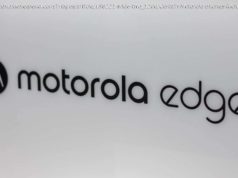It’s happened. The OnePlus 7 and OnePlus 7 Pro are finally here. But unlike past OnePlus phones, the big news isn’t about how good value for money the hand| Trusted Reviews
But that doesn’t mean OnePlus has fully made the transition to being “just another smartphone maker” with its latest flagship OnePlus 7 Pro for one key reason: The phone has a 90Hz “fluid AMOLED” display. To non-techies this doesn’t sound like much, but for me, and anyone that’s used a phone with a higher than 60Hz screen, it’s a huge deal. Here’s why.
Starting with the basics, Hz (Hertz) is a measurement of a screen’s refresh rate. It determines how many times a second a screen displays an image. So a 30Hz screen will display 30 frames per second, a 60Hz will show 60 frames per second and so on and so on – you get the idea.
Most phones are locked to display at 60Hz which is viewed as the industry standard for most monitors and TVs. The advantage of being able to go higher than 60Hz is that by displaying more frames per second, basic things like navigating menus will look smoother, and interactive apps and games will feel more reactive and enact touch inputs faster.
This is because there are shorter gaps between when you touch the screen and the input is rendered.






